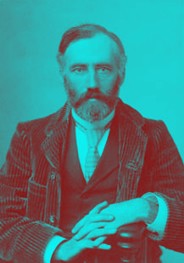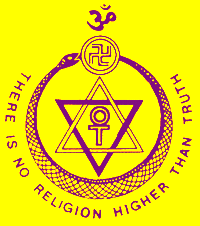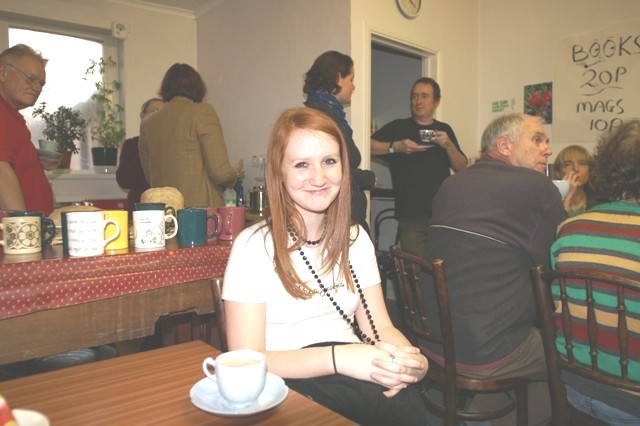Want to know more
about Theosophy?
DEFINED
From the writings of William Quan Judge,
a pioneering Theosophist and
co-founder of the orginal Theosophical
Society, founded in
theosophycardiff@uwclub.net
____________________________
Cardiff
Theosophical Society
Mission
Statement
The
dominant and core activity of Cardiff Theosophical Society
is to
promote and assist the study of Theosophical Teachings
as
defined by the writings of Helena
Petrovna Blavatsky,
William Quan Judge, Alfred Percy Sinnett and
their lineage.
This
Mission Statement does not preclude non Theosophical
activities
but these must be of a spiritual nature
and/or
compatible with the Objects of the Society.
____________________________

William Quan Judge
1851 - 1896
Theosophy
Defined
By
William
Quan Judge
Theosophy [from Gr. theosophia knowledge of divine
things, deriv. of theosophos wise about God; theos God + sophos, wise]: a name
which, as specifying a religious philosophy, was originated by Ammonius Saccas
in the third century of our era.
The body of ethical, philosophic, and scientific
doctrines to which that title applies is, however, as old as humanity itself,
and contains everything that is true in all other and later systems.
Esoterically preserved and transmitted in its entirety by adepts and initiates,
from time immemorial, their messengers -- known to the world as "great
teachers" and "saviours" -- have, at periodic intervals
determined by cyclic law, exoterically taught as much of it as could safely be
given out and which any considerable portion of our race could at such times
receive and assimilate.
Theosophy teaches a knowledge of the laws governing
the evolution of the universe. It is not based upon assumed divine revelation,
but upon consciousness. It sees no unsolvable mystery anywhere, throws the
words coincidence and chance out of its vocabulary, and affirms the
omnipresence and omnipotence of law and perfect justice.
Theosophy postulates an Eternal Principle, unknowable
except in its manifestations, which is in and is all things, and which,
periodically and eternally, manifests itself and recedes from manifestation --
evolution and involution. Its opposite poles in the manifested universe are
spirit and matter, which are coexistent and inseparable.
In manifesting itself the spirit-matter differentiates
on seven planes, which are of progressive density down to that within our sensuous
perception, the substance in all being the same, but differing in the
proportions of its two compound elements. Through all thrill ceaselessly
vibrations which are the inexhaustible impulse from the First Cause. These
vibrations are distinct, each from all the others, and each always the same in
mode upon every plane, but differing in rate according to the rarity or density
of the substance of the plane. By means of these vibrations are brought about
all forces -- phenomena in nature, specialized differentiations and effects of
creation, preservation, and mutation -- in the world of forms as well as upon
the ethereal planes.
Thus every atom of the universe is infused with
spirit, which is life in one of its phases of manifestation, and endowed with
qualities of consciousness and intelligence -- likewise phases of the spirit --
in conformity to the requirements of its differentiation.
On the lowest material plane, which is that of
humanity, the spirit focalizes itself in all human beings who permit it to do
so. Its rejection is the cause of ignorance, from which flow all sin,
suffering, and sorrow; by its conscious acceptance man becomes partaker of the
Divine Wisdom, "one with the gods," entering into possession of an
ever-increasing power of consciousness, and attains oneness with the Absolute.
This is the ultimate destiny of all beings; hence Theosophy affirms the
perfectibility of the race and rejects the concept of innate unregenerable
wickedness.
From the theosophic point of view the world is
compounded of the Egos or individual spirits, for whom it emanates from the
Divine Will; and its evolution is due to the impulse imparted by its spiritual
element, that force manifesting itself from the beginning in the primary
conditions of life -- far below the sentient stage -- and having in the
evolvement of higher forms, including man, the guidance and direction of
intelligent, perfected beings from other and older evolutions. Hence man is
deemed a conscious spirit, the flower of evolution; while below him, in the
lower kingdoms, are other less-advanced classes of egos, all, however, on the
way of ascent to the human stage, which they will eventually reach when man has
gone on still higher.
The perfecting of self-consciousness is the object of
evolution. By this man is enabled to reach more exalted stages of existence.
And his conditioned mortal life is for the purpose of affording him experience
by which that self-consciousness may be developed and cognition of the spirit
attained.
Man is a spirit and requires vehicles with which to
come in touch with all the planes of nature included in evolution, and it is
these vehicles that make of him an intricate, composite being, liable to error,
but at the same time able to rise above all delusions. He is in miniature the
universe, for he is, as spirit, manifesting himself to himself by means of
seven differentiations. Therefore he is characterized in Theosophy as a
septenate or sevenfold being. His immortal being comprises a trinity, spirit
(Atman), the spiritual soul or discernment (Buddhi), and mind (Manas).
This triad requires as vehicles or instruments through
which to operate and gain cognition in matter four lower mortal principles.
These are: The animal passions and desires,
unintelligent and productive of ignorance through delusion (
The Linga Sarira belongs to the astral plane of
matter, which, being next above that of our tangible world in refinement of its
substance, is just beyond our normal sensuous perception. As the physical body
is at death reabsorbed into the material elements whence it was drawn, so the
astral body is eventually dissipated in and absorbed by the substance of its
plane; but its permanence is much greater than that of the gross body. During
life it is from the earliest moment until the last the model upon which are
molded the physical molecules of which the body is composed, and through it the
life-principle is enabled to animate the aggregate mass as a collective entity.
These lower four principles or sheaths are the transitory, perishable part of
man -- not himself, but in every sense the instruments he uses -- given up at the
hour of death and rebuilt at every new birth. The trinity is the real man, the
thinker, the individuality that passes from house to house, gaining experience
at each rebirth, while it suffers and enjoys according to its deeds. In each
successive earth-life he is known to others as a new personality, but in the
whole stretch of eternity he is one individual, conscious of an identity not
dependent on name, form, or recollections of personalities. This doctrine of
reincarnation is the very base of Theosophy, for it explains life and nature as
no other hypothesis can; and it is an essential to the scheme of evolution, for
without such re-embodiment on the plane of experiences and atonements there
could be no evolution of the human soul.
The Ego returning to mortal life only goes into the
family which either completely answers to its whole nature, gives an
opportunity for its evolutionary progress, or is connected with it by reason of
events in past incarnations and causes mutually created. Inseparable from the
doctrine of reincarnation is that of Karma, or justice, sometimes called the
"ethical law of causation." Mere entry into life is no fit foundation
for just reward or punishment, which must be the deserts for prior conduct. But
such consequent awards determine entry into life, and with unerring equity
establish the sequence of good and evil happenings in requital of the past.
Effect is always in cause, and thus the body, brain,
and intellectual faculties furnished by reincarnation being products of one's
own deserving, become the field from which must be gleaned the harvest planted
by acts in the past. The law of Karma applies in physical nature as well as in
ethics to solar systems, planets, races, nations, families, and individuals.
With reincarnation the doctrine of Karma explains the misery and suffering of
the world, and no room is left to accuse nature of injustice. The misery of any
nation or race is the direct result of the thoughts and acts of the Egos who
make up the race or nation. If they did wickedly in the past, they must suffer
the inevitable consequences. To this end they must go on incarnating and
reincarnating until the effects they caused have been exhausted. Though the
nation thus suffering chastisement should for a time disappear, the Egos
belonging to it could not leave the world, but would reappear as the founders
of some new nation in which they would continue to receive their karmic due.
With reference to postmortem conditions, Theosophy
teaches two states of existence somewhat analogous to the Christian
"purgatory" and "heaven." The first, immediately subsequent
to earth-life, is Kama-loka, where the immortal triad takes leave of the lower
principles remaining after separation from the body. Thence the Ego passes into
Devachan. The former is, as its name indicates, a place -- the astral plane
penetrating and surrounding the earth -- the latter a state of being, or rather
of consciousness.
In Kama-loka all the hidden passions and desires are
let loose, and enough mentality is retained to make them tortures. When the
astral body in which they cohere is disintegrated, as it is in time, they
remain a sort of entity in the Kama-Rupa, a form of still less materiality than
the Linga Sarira. Eventually this too is said to fade out, leaving only their
essence, the Skandhas, fateful germs of karmic consequence, which, when the Ego
emerges from the devachanic state, are by the law of attraction drawn to the
new being in which it incarnates.
Owing to the law of cohesion between the principles,
which prevents their separation before a given time, the untimely dead must
pass in Kama-loka a period almost equal to the length life would have been but
for the sudden termination. Losing the body has not killed them. They still
consciously exist in the astral body, and in the case of very wicked and
forceful persons -- some executed criminals, for instance -- may be even more
harmful on the astral plane than they were in life.
Prolonged kama-lokic existence is no injustice to the victims
of accident, since death, like everything else, is a karmic consequence.
Finally, it may be said of Kama-loka that it is the last conscious state of the
thoroughly evil human souls bereft of the spiritual tie and doomed to
annihilation (Avichi).
Having in life centered the consciousness in the kamic
principle, preserved intellect and rejected the spirit, leading persistent
lives of evil for its own sake, they are the only damned beings we know. Pure
souls speedily pass from Kama-loka to the devachanic state. It is a period of
rest; a real existence, no more illusionary than earth life, where the essence
of the thoughts of life that were as high as character permitted expands and is
garnered by the soul and mind. When the force of these thoughts is fully
exhausted the soul is once more drawn back to earth, to that environment which
will best promote its further evolution.
No new ethics are presented by Theosophy, as it is
held that right ethics are forever the same. But in the doctrines of Theosophy
are to be found the philosophical and reasonable basis of ethics and the
natural enforcement of them in practice.
The present worldwide interest in Theosophy dates from
1875, when Helena P. Blavatsky, a messenger of the adepts, appeared in New
York, initiated the theosophic movement, and, with Henry S. Olcott, William Q.
Judge, and several other persons, formed the Theosophical Society. Other
revivals of the ancient doctrine, occurring in the last quarter of each century
during several hundred years past, are matters of historic record; but, as
their times were not propitious, they amounted to little in their effect upon
humanity at large compared with the importance this one has attained.
The Theosophical Society, though its members
generally, no doubt, subscribe to theosophic doctrine, is not dogmatic, but
admits to membership all who can conscientiously accept its three avowed
objects:
1. "To form the nucleus of a Universal
Brotherhood of Humanity without any distinctions whatever.
2. To promote the study of ancient and modern
religions, philosophies, and sciences.
3. To investigate unexplained laws of nature and the
psychical powers of man."
Starting with a membership of fifteen persons in 1875,
it has spread all over the globe, until now it has hundreds of branches
scattered through all the civilized and even the semi-civilized countries, and
counts its members by thousands. Beyond its organization in importance,
however, is the wonderful influence of theosophic teachings in coloring the literature,
thought, ethics, and even scientific progress and religious expression of the
world. The size of the Society gives but a very imperfect idea of the extent of
its work.
The best books conveying instruction in detail
concerning theosophic doctrine -- but a meager skeleton of which has been
offered in the foregoing -- are the following: H. P. Blavatsky, The Secret
Doctrine (1888); Isis Unveiled (1877); The Key to Theosophy (1889); William Q.
Judge, The Ocean of Theosophy (1893); A. P. Sinnett, Esoteric Buddhism (1883);
Five Years of Theosophy, selections from The Theosophist (1885); Rama Prasad,
Nature's Finer Forces (1890); Patanjali (Judge's version) Yoga Aphorisms
(1889). A score of theosophic magazines are issued in half as many languages.
The leading one of the Theosophical Society in
Is Theosophy a Religion ? By H P Blavatsky
A Textbook of Theosophy By C W Leadbeater
Outline of Theosophy By C W Leadbeater
Theosophy and the Theosophical Society
Events Information Line 029 2049 6017
_______________________
Find
out more about
Theosophy
with these links
Cardiff
Theosophical Society meetings are informal
and there’s always
a cup of tea afterwards
The Cardiff Theosophical Society Website
The National Wales Theosophy Website
Dave’s Streetwise Theosophy Boards
If
you run a Theosophy Group then please
Feel
free to use any material on this Website
Theosophy
Cardiff’s Instant Guide to Theosophy
Cardiff
Theosophical Order of Service (TOS)
Within the British Isles, The Adyar Theosophical Society has Groups in;
Bangor*Basingstoke*Billericay*Birmingham*Blackburn*Bolton*Bournemouth
Bradford*Bristol*Camberley*Cardiff*Chester*Conwy*Coventry*Dundee*Edinburgh
Folkstone*Glasgow*Grimsby*Inverness*Isle
of Man*Lancaster*Leeds*Leicester
Letchworth*London*Manchester*Merseyside*Middlesborough*Newcastle
upon Tyne
North
Devon*Northampton*Northern Ireland*Norwich*Nottingham
Perth*Republic of
Ireland*Sidmouth*Southport*Sussex*Swansea*Torbay
Tunbridge
Wells*Wallasey*Warrington*Wembley*Winchester*Worthing
One Liners & Quick Explanations
The main criteria
for the inclusion of
links on this
site is that they are have some
relationship
(however tenuous) to Theosophy
and are
lightweight, amusing or entertaining.
Topics include
Quantum Theory and Socks,
Dick Dastardly
and Legendary Blues Singers.
No
Aardvarks were harmed in the
Includes
stuff about Marlon Brando, Old cars,
Odeon
Cinema Burnley, Heavy Metal, Wales,
Cups of Tea,
Mrs Trellis of North Wales.
Cardiff
Theosophical Order of Service
General pages about Wales, Welsh History
and The History of Theosophy in Wales
Her Teachers Morya & Koot Hoomi
The Most
Basic Theosophy Website in the Universe
If
you run a Theosophy Group you can use
this
as an introductory handout
Lentil burgers, a
thousand press ups before breakfast and
the daily 25 mile
run may put it off for a while but death
seems to get most
of us in the end. We are pleased to
present for your
consideration, a definitive work on the
subject by a
Student of Katherine Tingley entitled
For everyone
everywhere, not just in Wales
Theosophy and the Number Seven
A selection of articles relating to the esoteric
significance of the Number 7 in Theosophy
The Spiritual Home of Urban Theosophy
The Earth Base for Evolutionary Theosophy
Quick Explanations
with Links to More Detailed Info
What is Theosophy ? Theosophy Defined (More Detail)
Three Fundamental Propositions Key Concepts of Theosophy
Cosmogenesis Anthropogenesis Root Races
Ascended Masters After Death States
The Seven Principles of Man Karma
Reincarnation Helena Petrovna Blavatsky
Colonel Henry Steel Olcott William Quan Judge
The Start of the Theosophical
Society
History of the Theosophical
Society
Theosophical Society Presidents
History of the Theosophical Society
in Wales
The Three Objectives of the
Theosophical Society
Explanation of the Theosophical
Society Emblem
The Theosophical Order of
Service (TOS)
Glossaries of Theosophical Terms
by
Annie
Besant
THE PHYSICAL
PLANE THE ASTRAL PLANE
KÂMALOKA THE MENTAL PLANE DEVACHAN
THE BUDDHIC AND
NIRVANIC PLANES
THE THREE KINDS OF KARMA COLLECTIVE KARMA
THE LAW OF
SACRIFICE MAN'S ASCENT
______________________
Annie Besant Visits Cardiff 1924
An Outline of Theosophy
Charles Webster Leadbeater
Theosophy - What it is How is it Known?
The Method of Observation General Principles
Advantage Gained from this
Knowledge
The Deity The Divine Scheme The Constitution of Man
The True Man Reincarnation The Wider Outlook
Death Man’s Past and Future Cause and Effect
Reincarnation
This
guide has been included in response
to the
number of enquiries we receive on this
subject
at Cardiff
Theosophical Society
From A Textbook
of Theosophy By C W Leadbeater
How We Remember our Past Lives
Life after Death & Reincarnation
The
Slaughter of the
a
great demand by the public for lectures on Reincarnation
Classic Introductory Theosophy Text
A Text Book of Theosophy
By C
What Theosophy Is From the Absolute to Man
The Formation of a Solar System The Evolution of Life
The Constitution of Man After Death
Reincarnation
The Purpose of Life The Planetary Chains
The Result of Theosophical Study
The Occult World
By
Alfred Percy Sinnett
The Occult World is an treatise on the
Occult and Occult Phenomena, presented
in
readable style, by an early giant of
the Theosophical Movement.
Preface to the American Edition Introduction
Occultism and its Adepts The Theosophical Society
First Occult Experiences Teachings of Occult Philosophy
Later Occult Phenomena Appendix
The Seven Principles of Man
By
Annie Besant
A Student of
Katherine Tingley
Katherine Tingley (1847 -1929)Was the founder &
President
of the Point Loma Theosophical Society 1896 -1929
She and her students produced a series of informative
Theosophical works in the early years of the 20th century
Elementary Theosophy Who is the Man?
Body and Soul
Body, Soul and Spirit Reincarnation
Karma The Seven in Man and Nature
Helena
Petrovna Blavatsky 1831 – 1891
The
Founder of Modern Theosophy
Index of
Articles by
By
H P
Blavatsky
Is the Desire to Live Selfish?
Ancient Magic in Modern Science
Precepts Compiled by H P Blavatsky
Obras
Por H P Blavatsky
En
Espanol
Articles
about the Life of H P Blavatsky
Writings of Ernest Egerton Wood
Theosophy and the Number Seven
A selection of articles relating to the esoteric
significance of the Number 7 in Theosophy
Index of
Searchable
Full
Text Versions of
Definitive
Theosophical
Works
H P Blavatsky’s Secret Doctrine
Isis Unveiled by H P Blavatsky
H P Blavatsky’s Esoteric Glossary
Mahatma Letters to A P Sinnett 1 - 25
A Modern Revival of Ancient Wisdom
(Selection of Articles by H P Blavatsky)
The Secret Doctrine – Volume 3
A compilation of H P Blavatsky’s
writings published after her death
Esoteric Christianity or the Lesser Mysteries
The Early Teachings of The
Masters
A Collection of Fugitive Fragments
Fundamentals of the Esoteric
Philosophy
Mystical,
Philosophical, Theosophical, Historical
and Scientific
Essays Selected from "The Theosophist"
Edited by George
Robert Stow Mead
From Talks on the Path of Occultism - Vol. II
In the Twilight”
Series of Articles
The In the
Twilight” series appeared during
1898 in The
Theosophical Review and
from 1909-1913 in The Theosophist.
compiled from
information supplied by
her relatives and friends and edited by A P Sinnett
Letters and
Talks on Theosophy and the Theosophical Life
Obras
Teosoficas En Espanol
Theosophische
Schriften Auf Deutsch
Karma Fundamental Principles Laws: Natural and Man-Made
The Law of Laws
The Eternal Now
Succession
Causation
The Laws of Nature A Lesson of The Law Karma Does Not Crush
Apply This Law
Man in The Three Worlds Understand The Truth
Man and His Surroundings The Three Fates
The Pair of Triplets
Thought, The Builder Practical Meditation Will and Desire
The Mastery of Desire Two Other Points The Third Thread
Perfect Justice
Our Environment
Our Kith and Kin Our Nation
The Light for a Good Man Knowledge of Law The Opposing Schools
The More Modern View Self-Examination Out of the Past
Old Friendships
We Grow By Giving Collective Karma Family Karma
National Karma India’s Karma National
Disasters
Annotated Edition Published
1885
Preface to the Annotated Edition Preface to the Original Edition
Esoteric Teachers The Constitution of Man The Planetary Chain
The World Periods Devachan
Kama Loca
The Human Tide-Wave The Progress of Humanity
Buddha Nirvana The Universe
The Doctrine Reviewed
Try these if you are looking for a
local Theosophy
Group or Centre
UK Listing of Theosophical Groups
Worldwide Directory of Theosophical Links
General pages
about Wales, Welsh History
and The History
of Theosophy in Wales
Wales is a
Principality within the United Kingdom
and has an eastern
border with England. The land
area is just over
8,000 square miles. Snowdon in
North Wales is the
highest mountain at 3,650 feet.
The coastline is
almost 750 miles long. The population
of Wales as at the
2001 census is 2,946,200.
__________________________________________
into categories and presented according to relevance
of website.
All Wales
Guide to Theosophy Instant Guide to Theosophy
Theosophy
Wales Hornet Theosophy Wales Now
Cardiff
Theosophical Archive Elementary Theosophy
Basic
Theosophy Theosophy in Cardiff Theosophy
in Wales
Hey Look!
Theosophy in Cardiff Streetwise
Theosophy
Grand
Tour Theosophy Aardvark Theosophy Starts Here
Theosophy 206 Biography of William Q Judge
Theosophy Cardiff’s Face Book of Great Theosophists
Theosophy Evolution Theosophy Generally Stated
Biography of Helena Petrovna Blavatsky
____________________________
Cardiff
Theosophical Society
Mission
Statement
The
dominant and core activity of Cardiff Theosophical Society
is to promote
and assist the study of Theosophical Teachings
as
defined by the writings of Helena
Petrovna Blavatsky,
William Quan Judge, Alfred Percy Sinnett and
their lineage.
This
Mission Statement does not preclude non Theosophical
activities
but these must be of a spiritual nature
and/or
compatible with the Objects of the Society.
____________________________
Cardiff Theosophical Society
206 Newport Road,
Cardiff, Wales, UK, CF24 -1DL
theosophycardiff@uwclub.net


